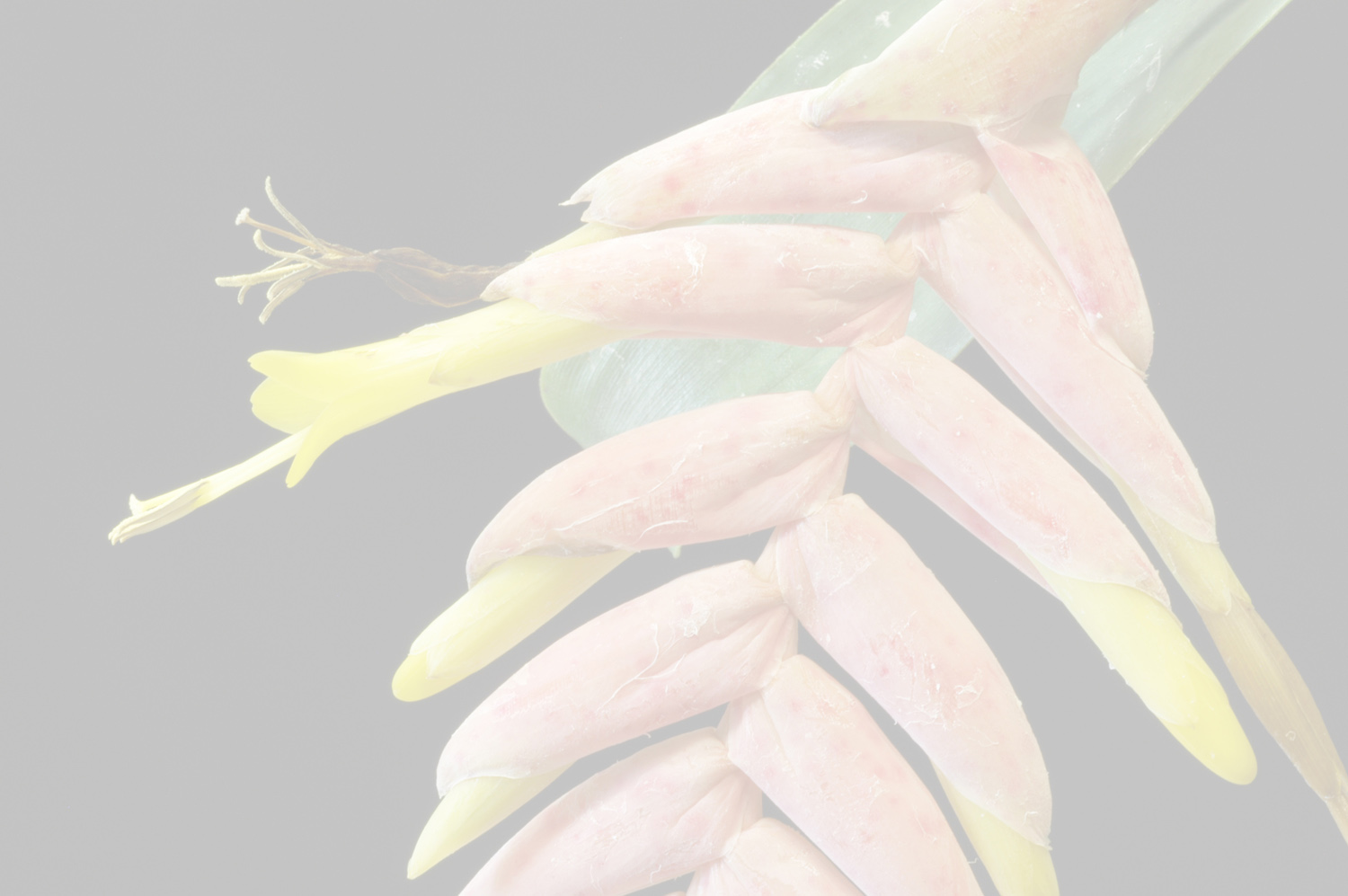Vriesea atropurpurea Silveira
Literature references:
*move your mouse pointer over the page numbers to see comment
Comments:
- According to the author, the name "atro-purpurea" refers to the coloration of the upper part of the petals. This was not confirmed in the specimen that flowered in cultivation; the overall color of this plant was paler than that of flowering specimens in the wild. But a specimen depicted by Coffani-Nunes (1997) that flowered in the wild, and which falls within the limits of the species proposed here, showed distinct dark purple spots on the apex margins of the petals. As a matter of fact, this author gave an imprecise description of V. atropurpurea in his study of the pheno- morphology of the Tillandsioideae from the Serra do Cipo and did not tackle the problem of Smith & Downs' (1977) circumscription, although this would have been possible by looking more closely at the synonymy.
According to the protologue, V. atropurpurea was included in section "Euvriesea" (= Vriesea), probably because of the exerted stamens which are slightly longer than the petal tube ("petalorum tubo paulo longiora"). However, V. atropurpurea is a typical member of section Xiphion because anthesis occurs at night (probably bat pollinated) and because of the faded color, campanulate corolla and obovate, proportionally wider petals. It should be mentioned that stamen length alone does not warrant the separation of the sections in question.
There are other species typical of the section Xiphion, such as V. clausseniana (Baker) Mez (pers. obs. ) and V. gigantea Gaudichaud (Sazima et al., 1995), with clearly exserted stamens, and the stamens are included in V. saundersii (Carriere) E. Morren ex Mez (Leme & Costa, 1994) and V. sceptrum Mez, belonging to the section Vriesea. In the section Xiphion, the species that most closely resembles V. atropurpurea is V. diamantinensis (Leme, 1997); it has a similar habit and differs by its sub-oblong leaf-blades, apex rounded, inflorescence compound, flowers suberect-secund at anthesis, and by the obtuse petal appendages.
V. glauca was also described by Silveira in the same work and was mistakenly labeled V. albescens in the plate caption. It is kept in synonymy here since it is impossible at the moment to identify dependable traits that distinguish it from V. atropurpurea, based on the descriptions and plates given by the author. This is not true of V. citrina, however. This species is a member of section Vriesea, in contrast to V. atropurpurea, and has a very distinct morphology that indicates it should be reinstated as a species.
Vriesea atropurpurea is a sun-loving species from the Serra do Cipo, Minas Gerais state.
General notes - It grows in the herbaceous vegetation of the "campos rupestres", at around 1,200 meters altitude. It was described in 1931 by Alvaro Astolpho da Silveira, in the second volume of Floralia Montium, but the author did not mention where the holotype was deposited, so we do not know today if there are herbarium sheets of the type material in some botanical institution or even if they ever existed.
In 1955, Lyman B. Smith listed this species as being of doubtful identity and stated that "it has not been possible to examine material of any of Silveira 's species and the description and illustration of the above are inadequate for classification". When he revised the genus Vriesea in 1966, he again did not accept the species, considering it a case of "identity not resolved". It was only in Smith & Downs' 1977 monograph that Alvaro da Silveira's work was accepted and V atropurpurea revalidated. Several taxa were placed in synonymy, including Tillandsia citrina and V minarum; the original plate of the latter was used to illustrate Silveira's species (:1233). But over the past 20 years, this synonymy has lent a whole new concept to V. atropurpurea, which conflicts with the information available in the protologue (i.e., description and plate ). This was seen recently when specimens collected at the type locality were found to fit the circumscription given by Silveira perfectly. The new material was compared to the data available on the other taxa, especially those from Serra da Piedade, the type locality of T. citrina and V. minarum, leading to the conclusion that there are two very distinct taxonomic entities involved. —See Leme 1999c p. 49(1): 3-11

